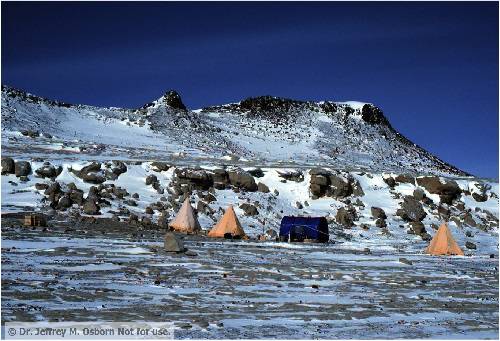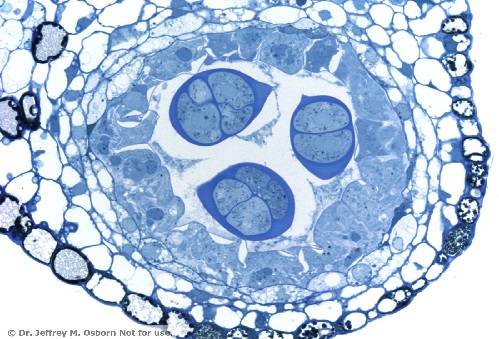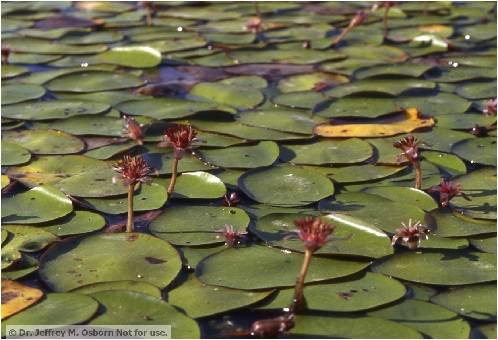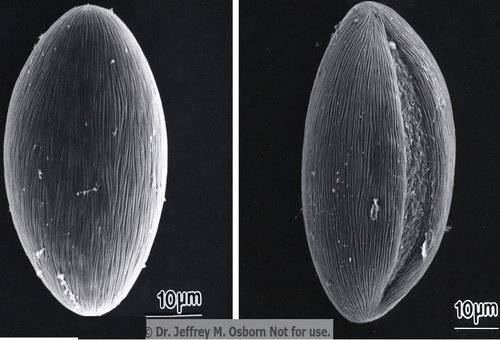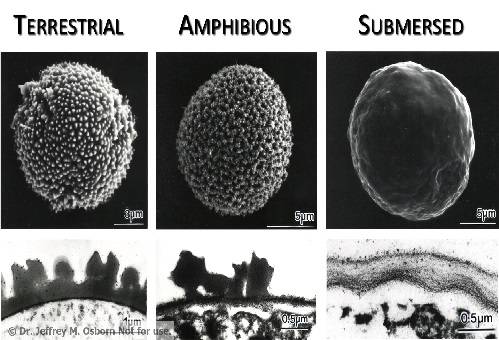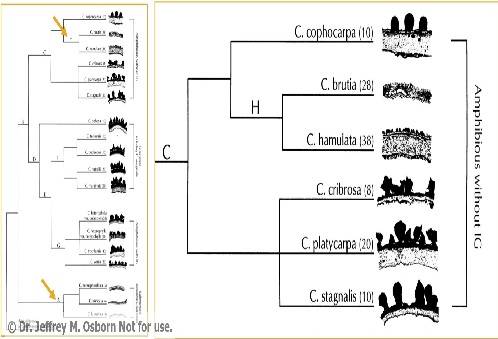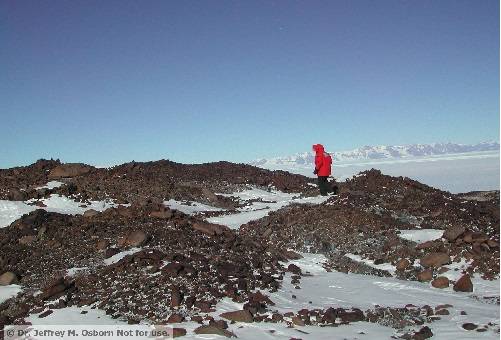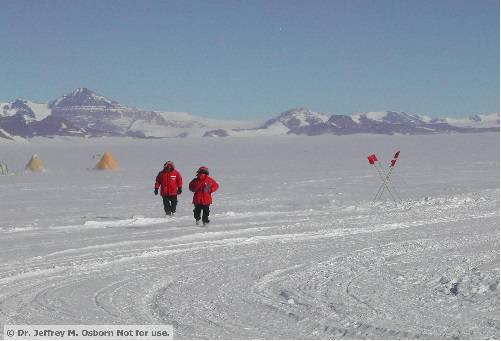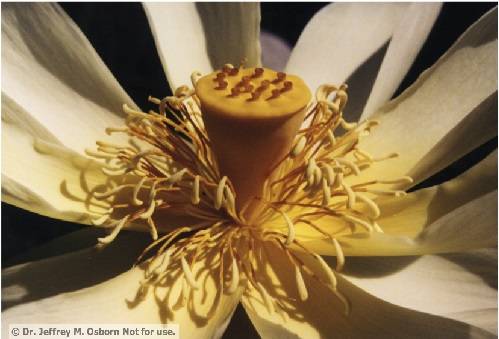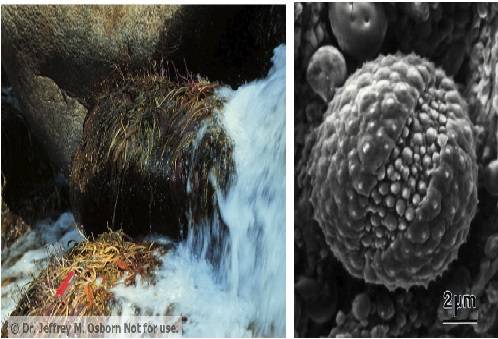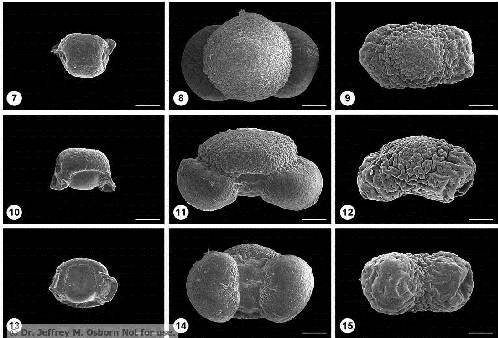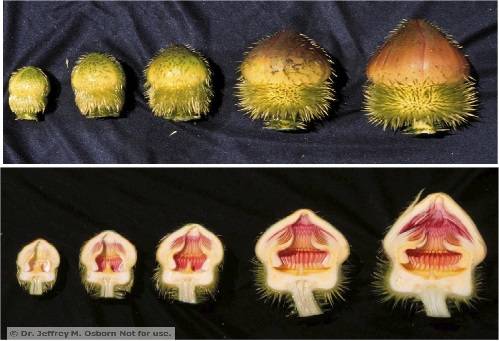Project Abstract:
“Aerodynamics of Fossil Pollen: Implications for Understanding Pollination Biology in Extinct Plants”
Although sacci are now known to play both aerodynamic and buoyancy roles, few published studies have explored anemophily in fossil plants, particularly aerodynamic characteristics of pollen from putatively wind-pollinated groups. The objective of this study was to empirically investigate the aerodynamic effects of key pollen characters through electron microscopy, mathematical modeling, and experiments using scaled-up physical models. Five structurally different fossil pollen types were studied: three bisaccate (Caytonanthus, Pteruchus, Pinus), one monosaccate (Gothania), and one non-saccate (Monoletes). For all saccate taxa, geometrical differences in overall shape and saccus size impacted pollen drag, and the presence of sacci produced measurable differences in the drag coefficient and shape factor (resistance coefficient). Grains of Pinus and Pteruchus had higher drag coefficients, remained airborne longer, and their sacci increased aerodynamic efficiency, whereas Gothania fell faster. This is the first study to experimentally demonstrate that sacci and grain geometry affect the aerodynamics of fossil pollen.
Publications:
- Grega, L., A. Novotny, C. Stablile, M. L. Taylor, C. P. Daghlian and J. M. Osborn. 2018. Aerodynamics of Fossil Pollen: Implications for Understanding Pollination Biology in Extinct Plants. In: M. Krings, C. J. Harper, N. R. Cuneo, ad G. W. Rothwell (Editors) Transformative Paleobotany, pages 253-269. Academic Press, London , UK.


